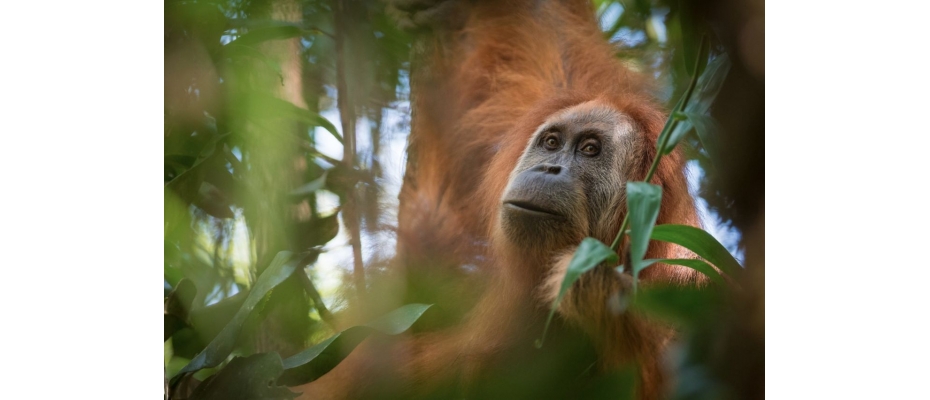
An international team has described a new great ape species, the Tapanuli orangutan (Pongo tapanuliensis), found in upland forests in the Batang Toru Ecosystem of North Sumatra, Indonesia. With no more than 800 individuals, this species is the most endangered great ape.
Barcelona, November 2nd 2017.- The study led by researchers from the University of Zurich and published in Current Biology, has among its authors researchers from the Centro Nacional de Análisis Genómico (CNAG-CRG) and from the Institut de Biologia Evolutiva (IBE (CSIC-UPF)). Tomàs Marqués-Bonet, ICREA Research Professor and who has a double affiliation at the CNAG-CRG and the IBE says: “After almost ten years observing the genetic population of the great apes, it is always surprising to find new populations unique and isolated from the rest.”
The most comprehensive study of the genome of wild orangutans
The population of Batang Toru was rediscovered in 1997. However, it was not until 2013 when skeletal material from an adult male orangutan killed in a human-animal conflict became available, and showed the uniqueness of this population. To confirm this uniqueness the Batang Toru orangutans’ genome was studied, as well as those of thirty-six other wild individuals. This genomic data has been generated at the CNAG-CRG and it is considered as the most comprehensive study of the genome of wild orangutans carried out so far.
Extensive computer modelling aimed at reconstructing the population history of orangutans, revealed that the Batang Toru population appears to have been isolated from all other Sumatran populations for at least 10-20’000 years, after which the low levels of influx of males from the northern populations had ceased. Adding additional evidence based on behavioral observations and ecological surveys from Batang Toru and other sites provided further support for the morphological and genetic findings.
The most endangered great ape species
A recent independent study by Indonesian and international scientists indicated that no more than 800 individuals remain in the Batang Toru Ecosystem. With only 800 individuals alive, Tapanuli orangutans are therefore the most endangered great ape species. Conservationists have drawn attention to the fact that urgent action is required to carefully review current proposals for further developments in the area that would threaten the livelihood of the new species. There is strong anthropogenic pressure on the Tapanuli orangutan due to conversion of pristine forest for mining, plans to build a hydro-electric dam, hunting, and general human encroachment. “If steps are not taken quickly to reduce current and future threats to conserve every last remaining bit of forest” the scientists point out, “we may see the discovery and extinction of a great ape species within our lifetime.”
Work of reference
Morphometric, Behavioral, and Genomic Evidence for a New Orangutan Species
Photo by Andrew Wamslay - Sumatran Orangutan Conservation Programme (SOCP)











